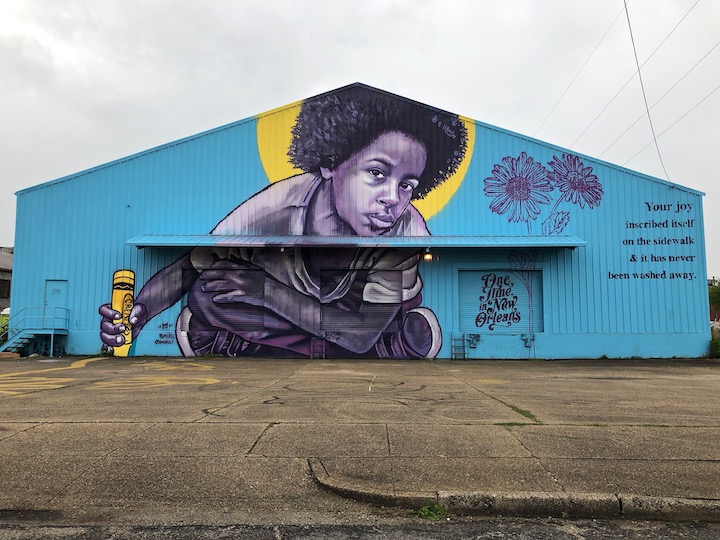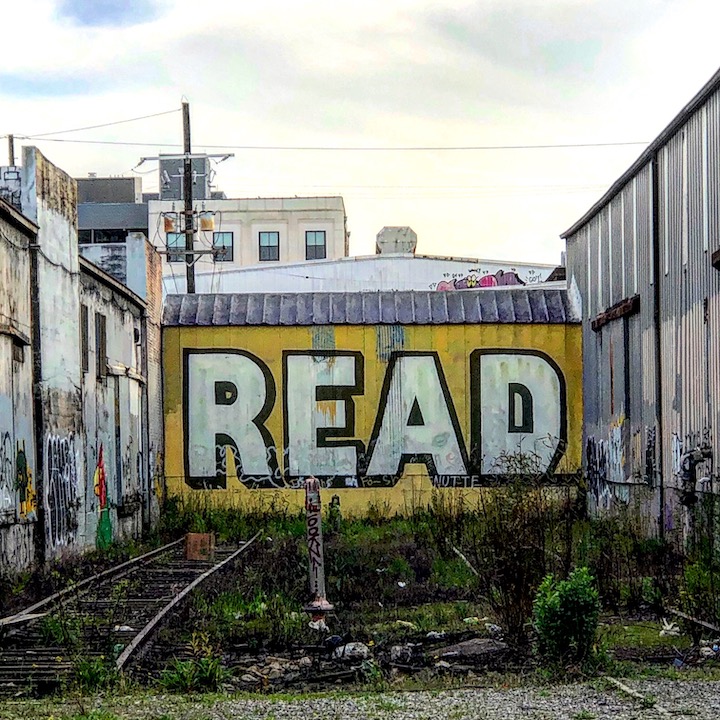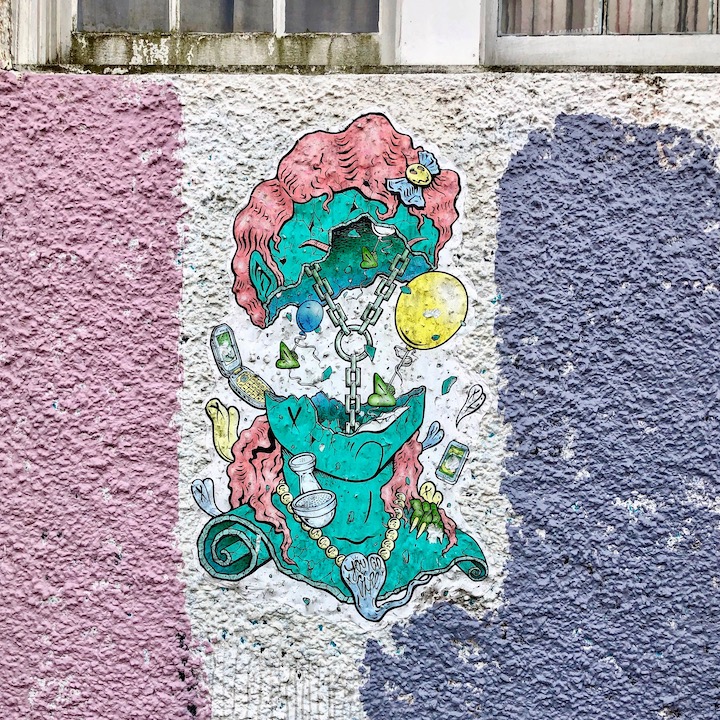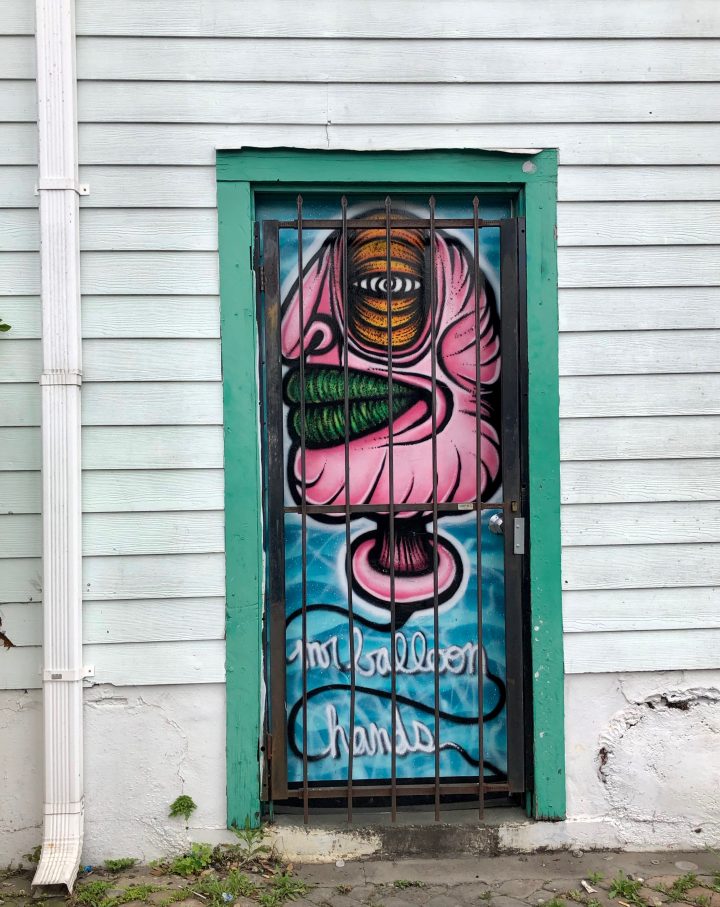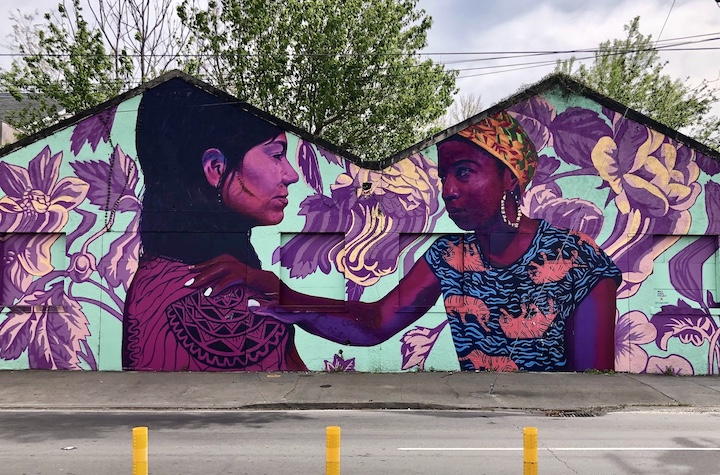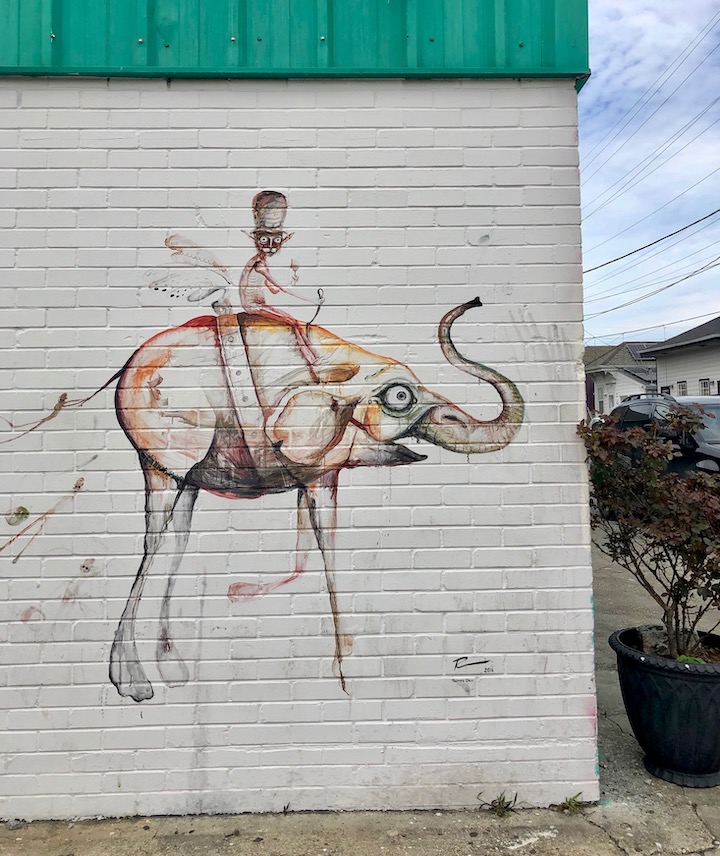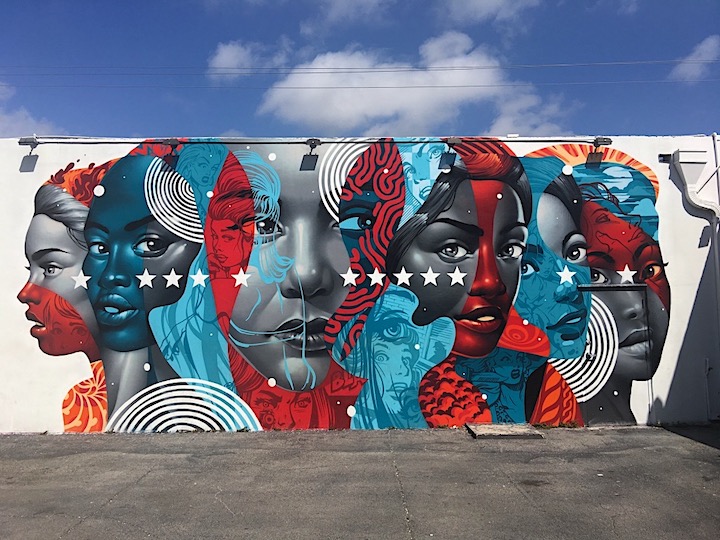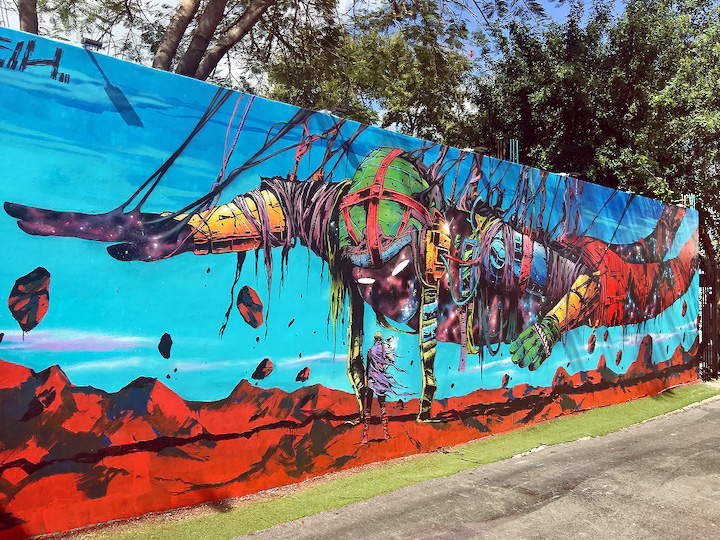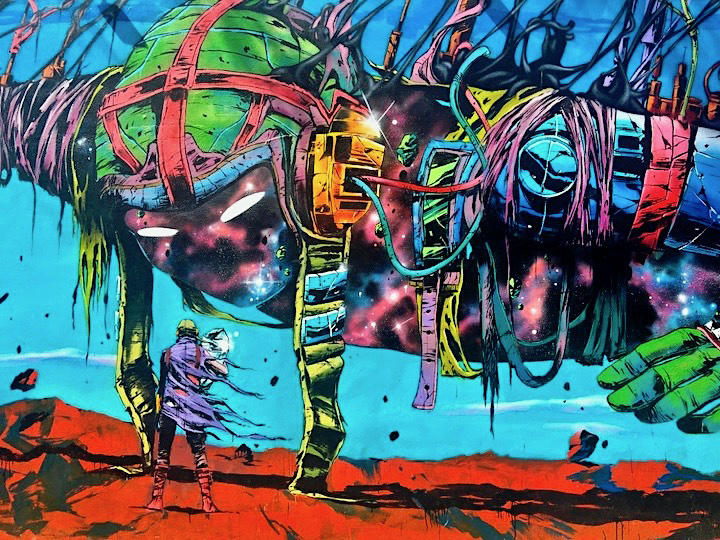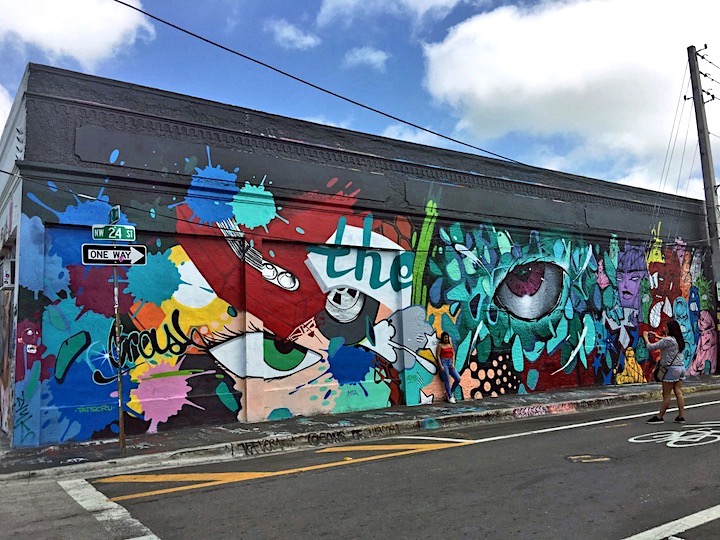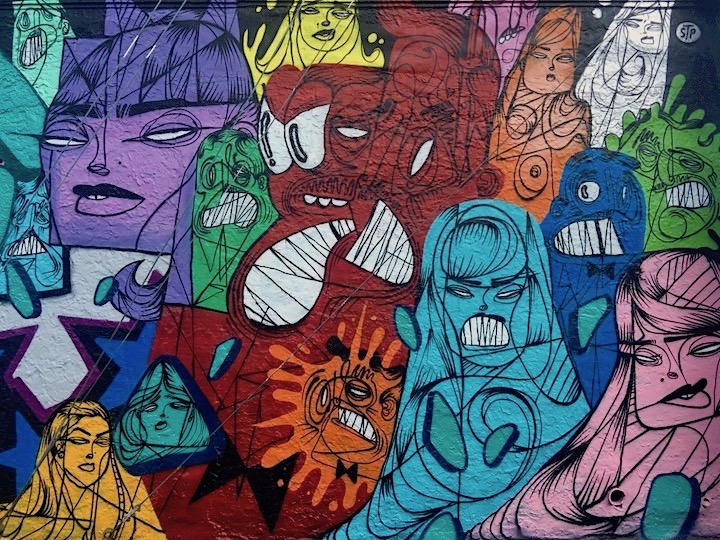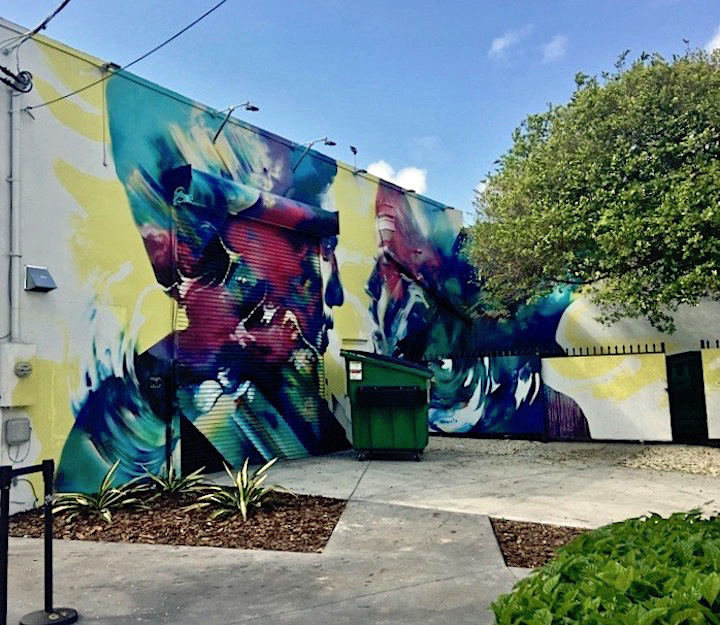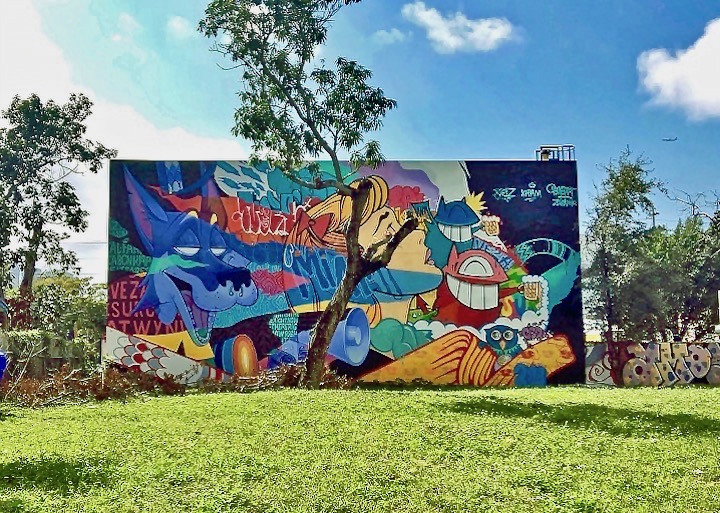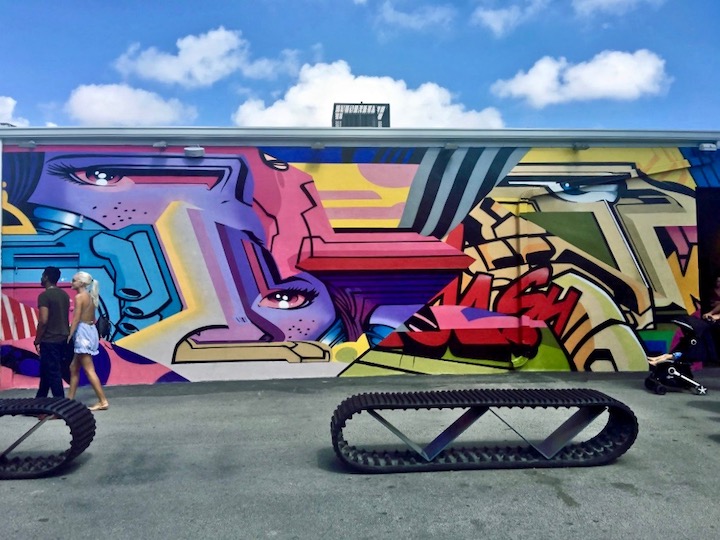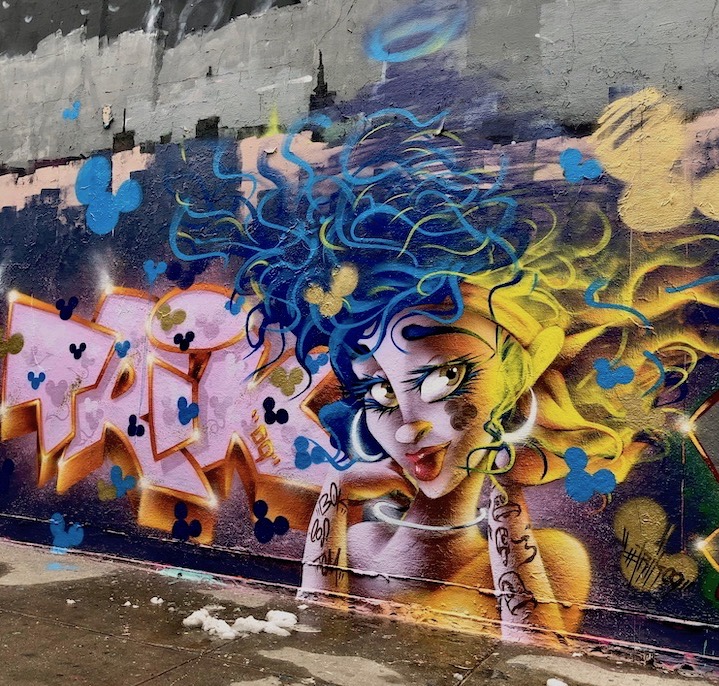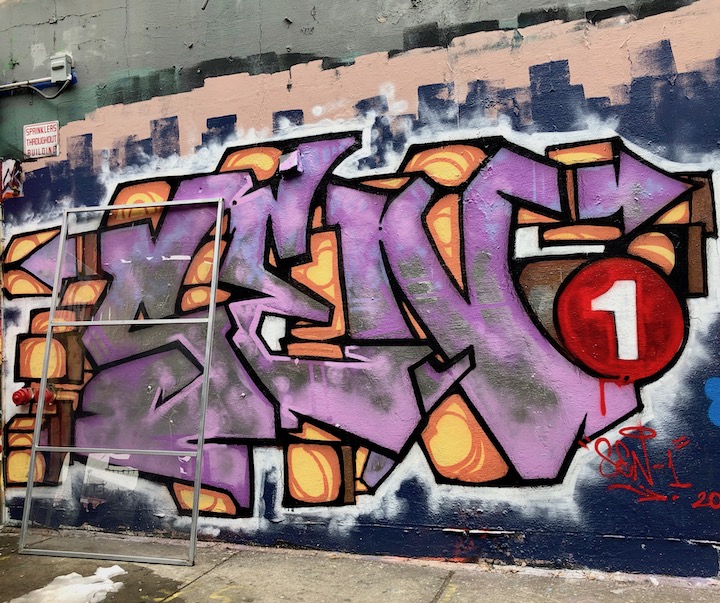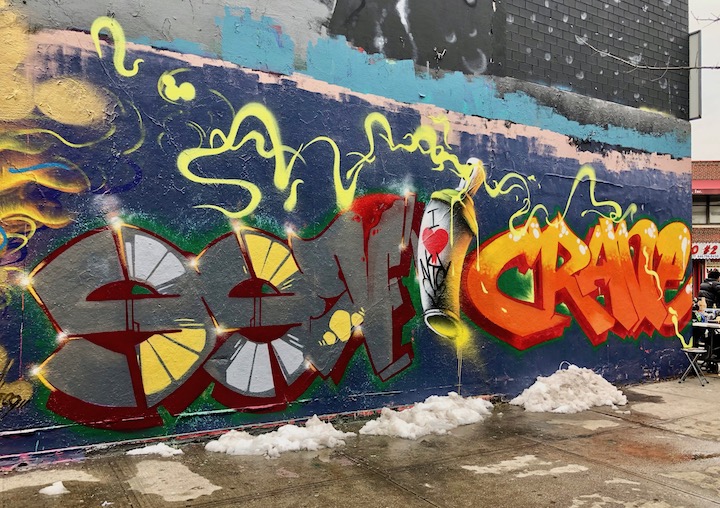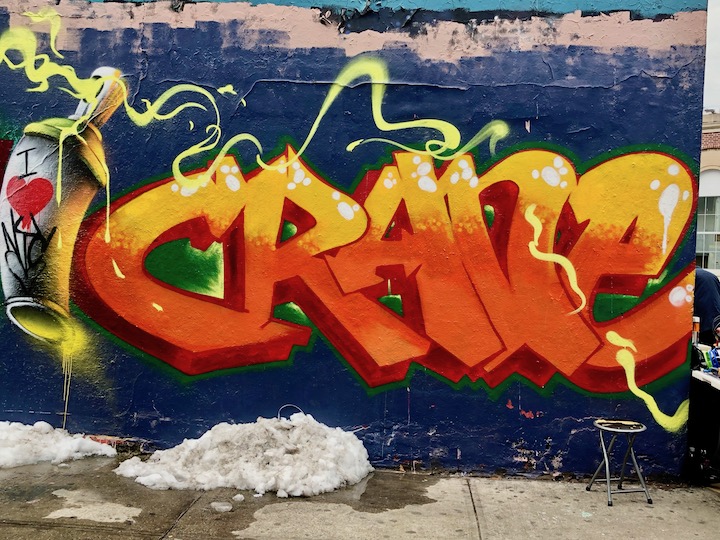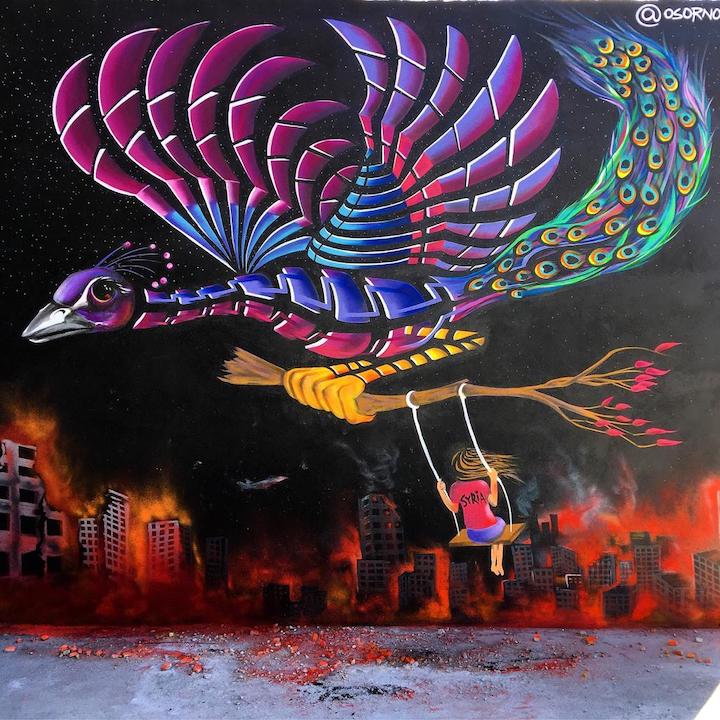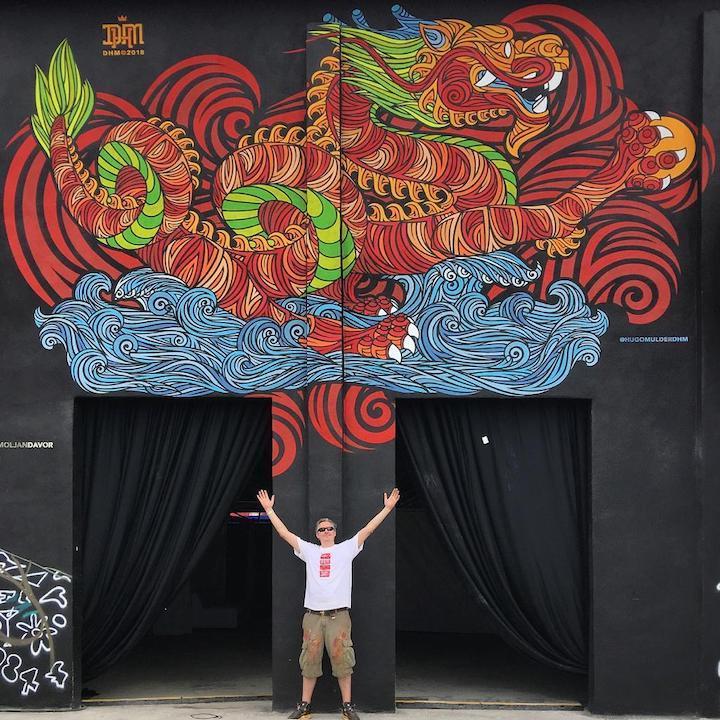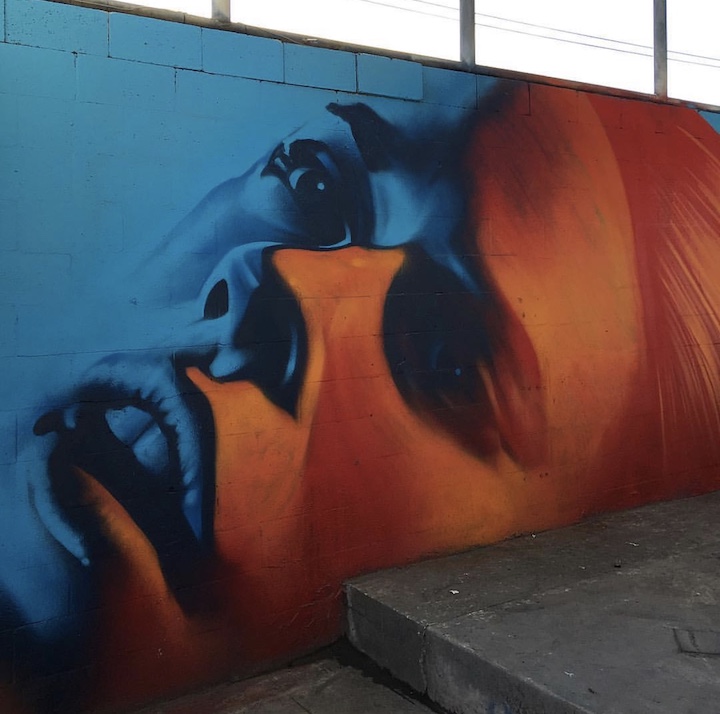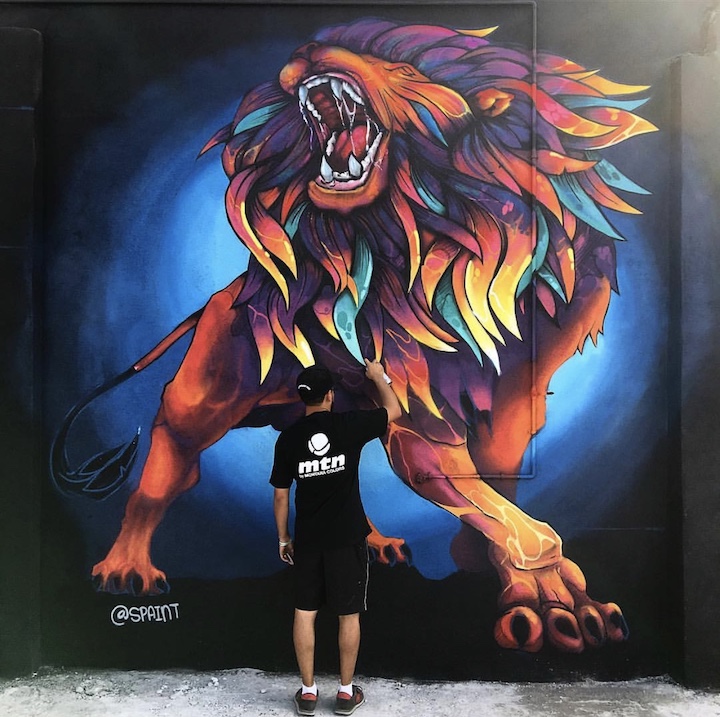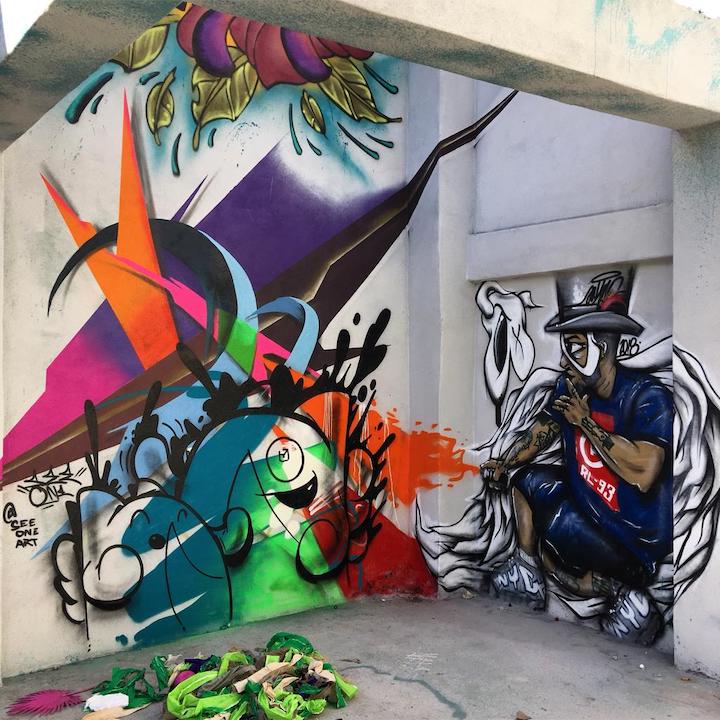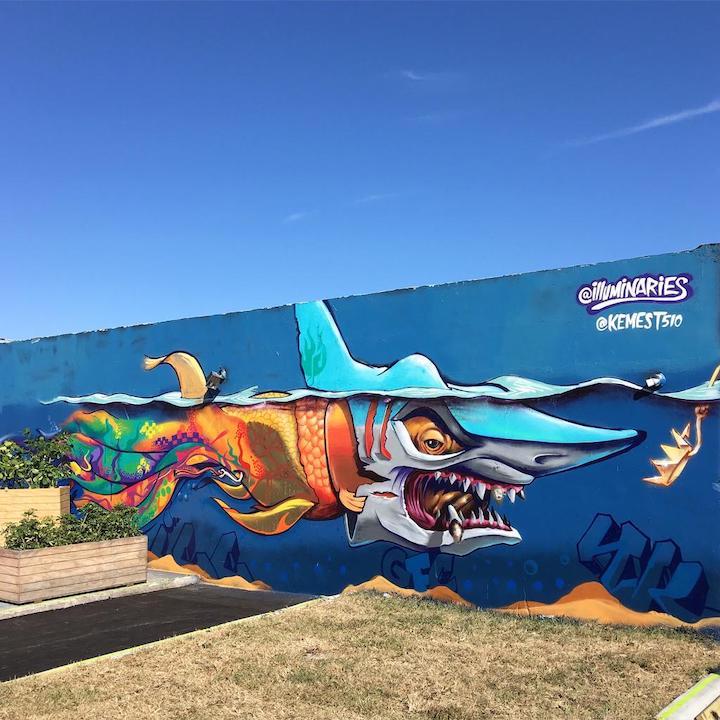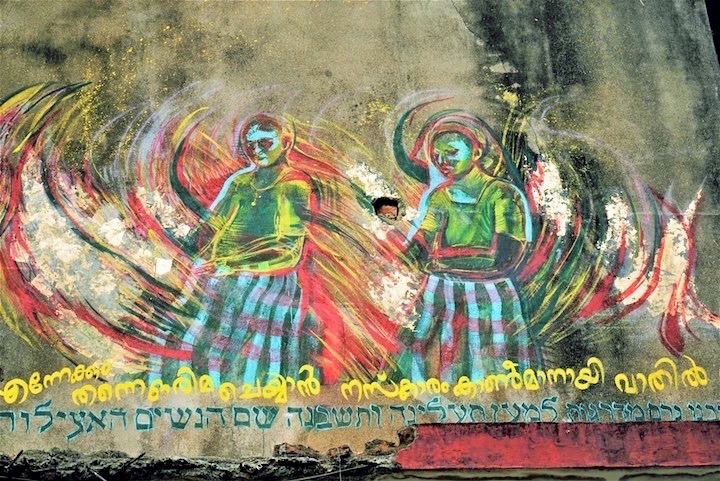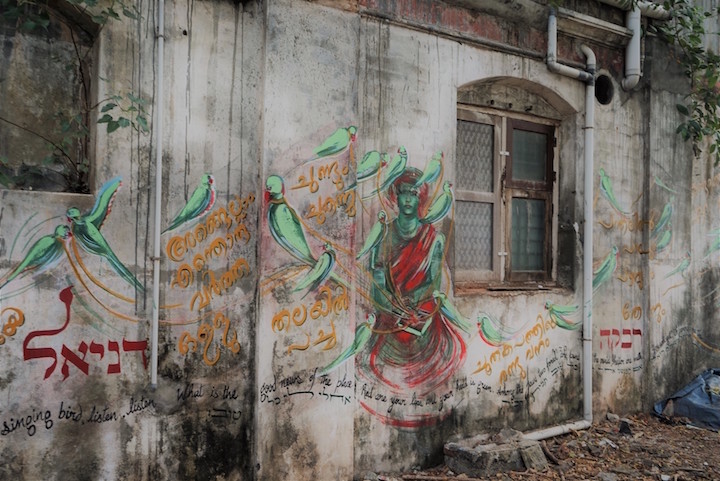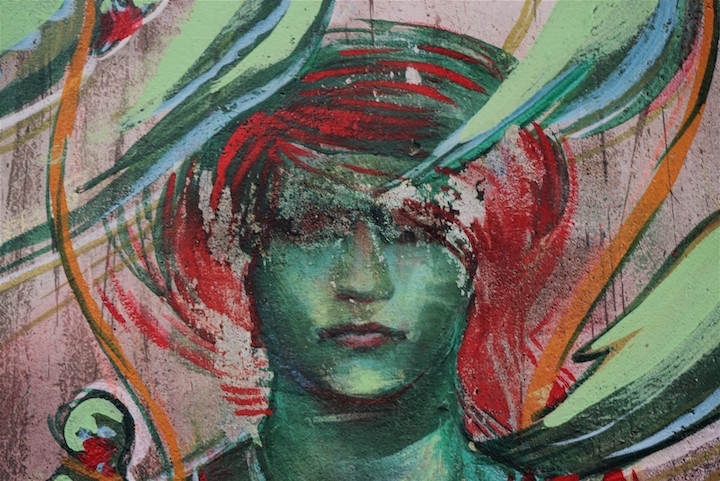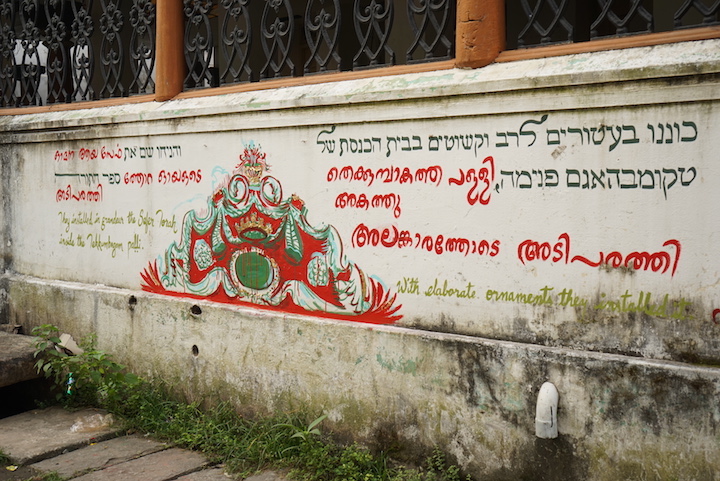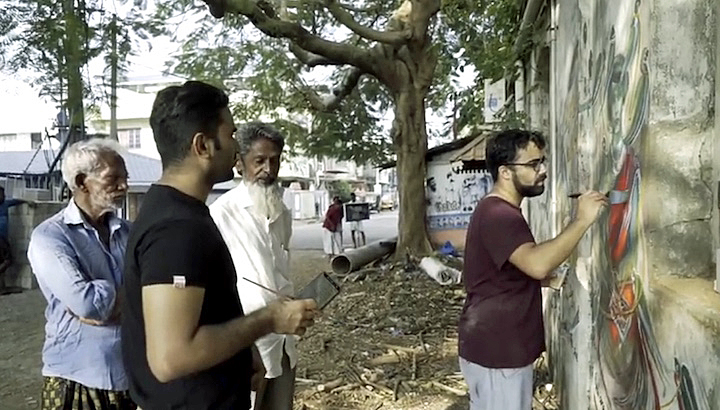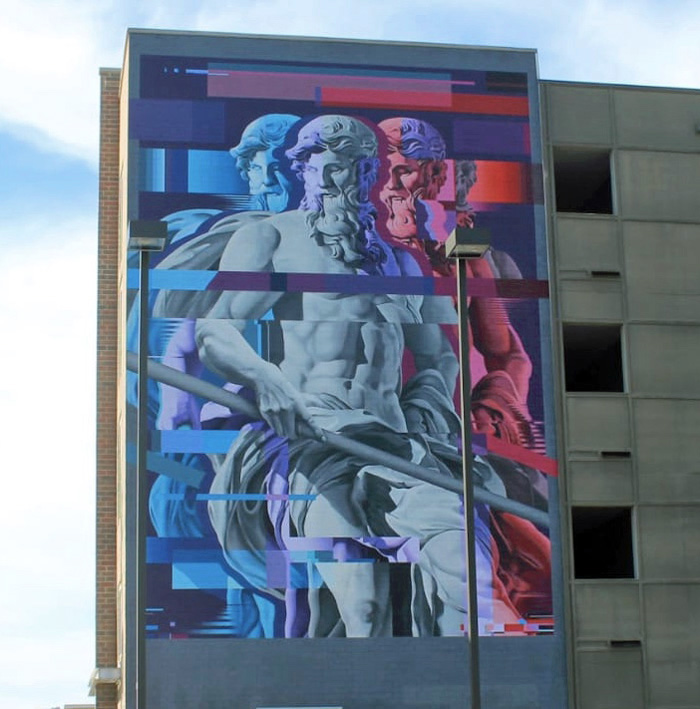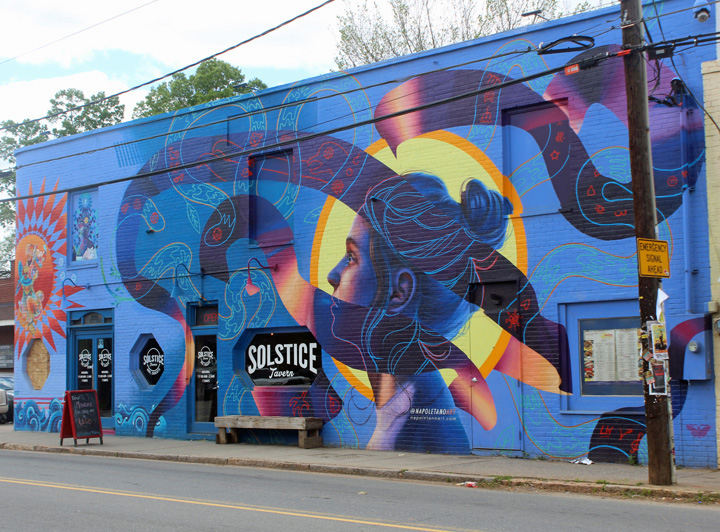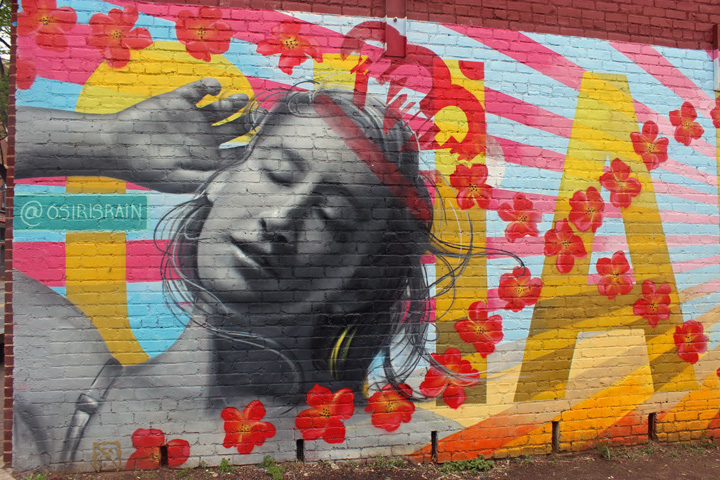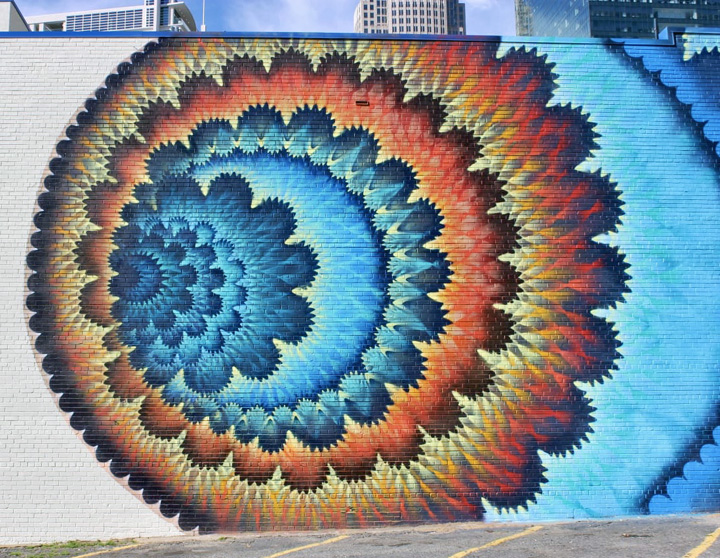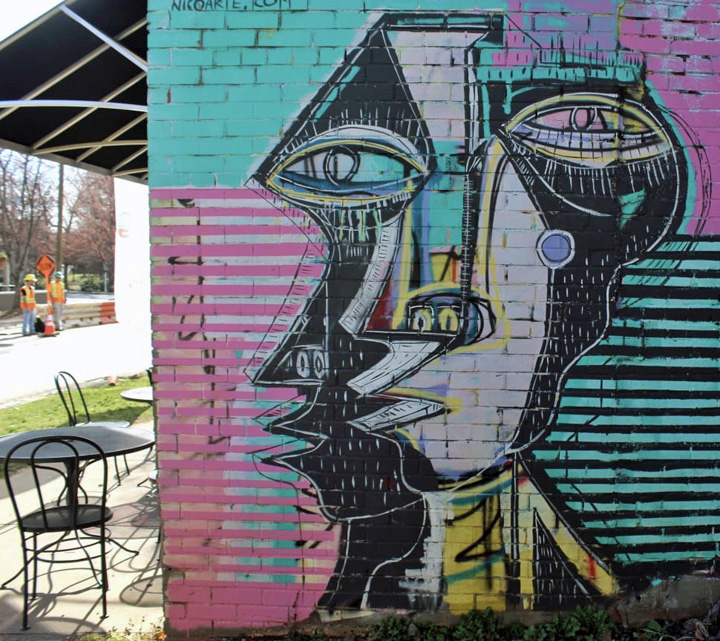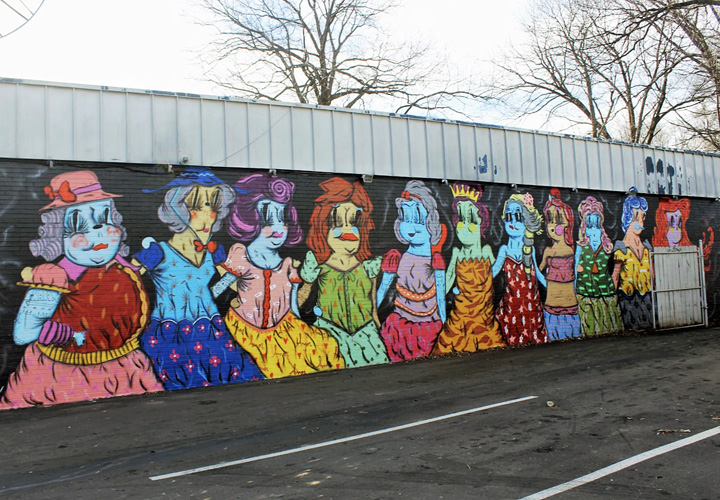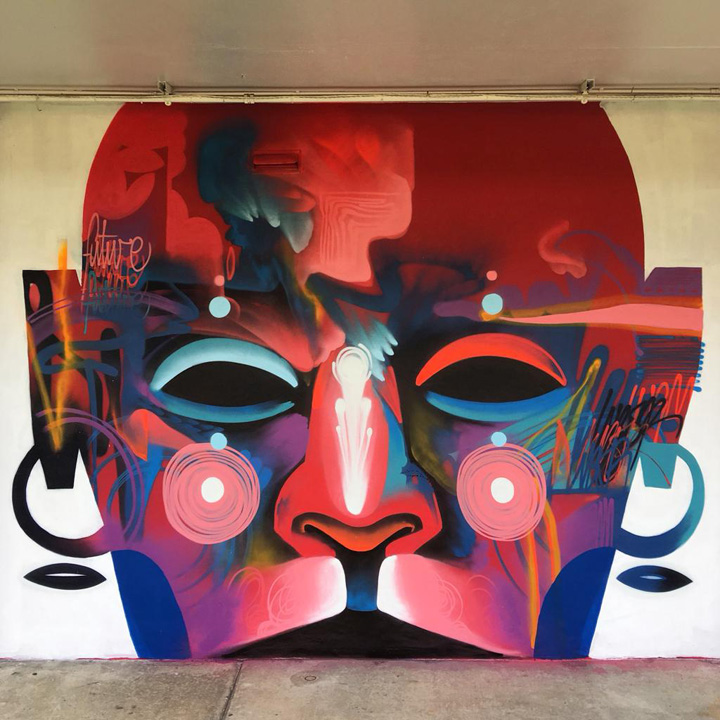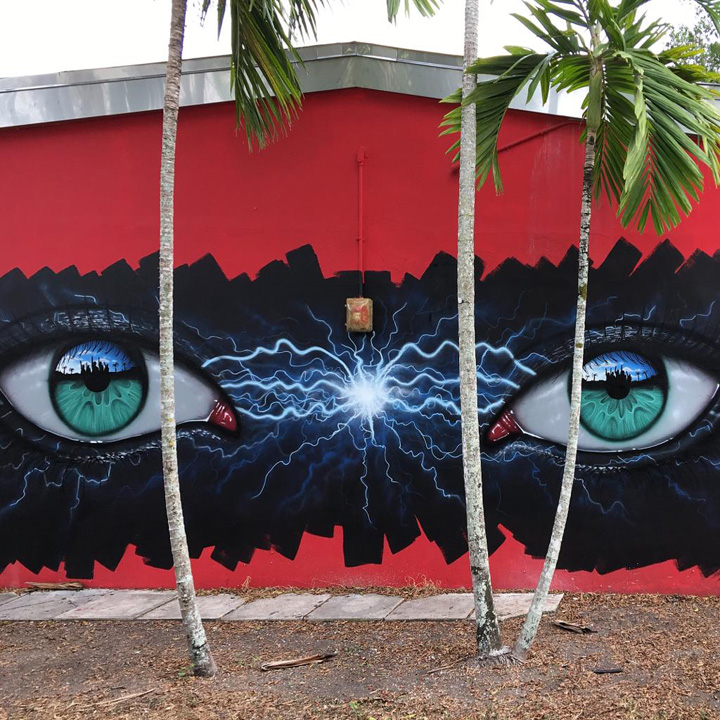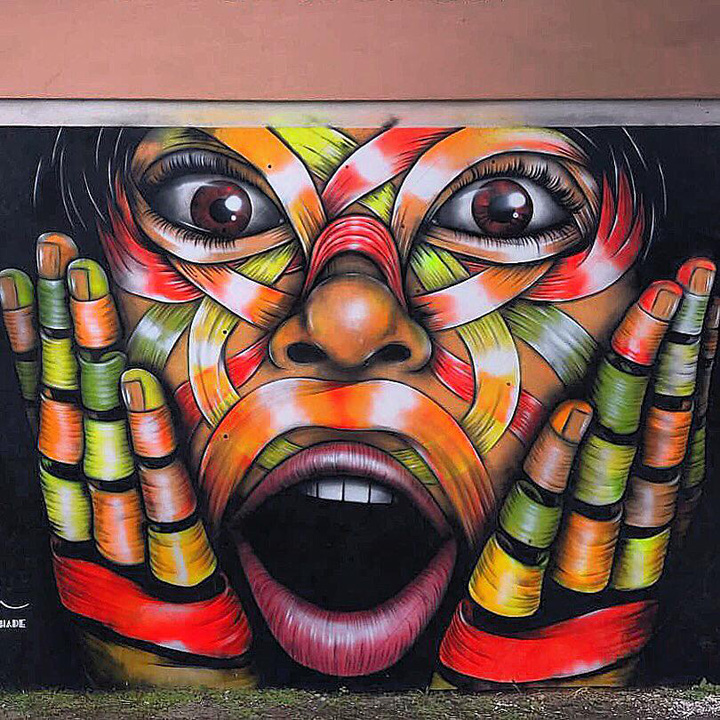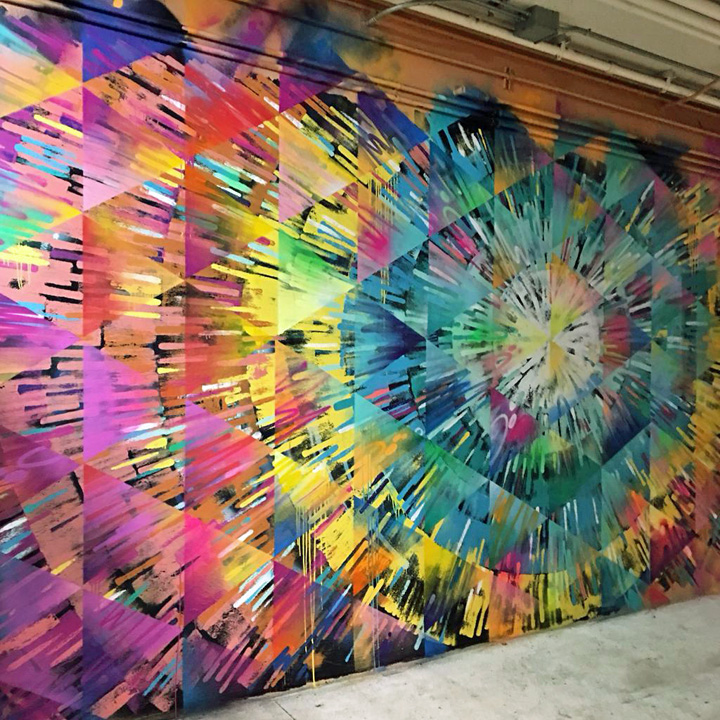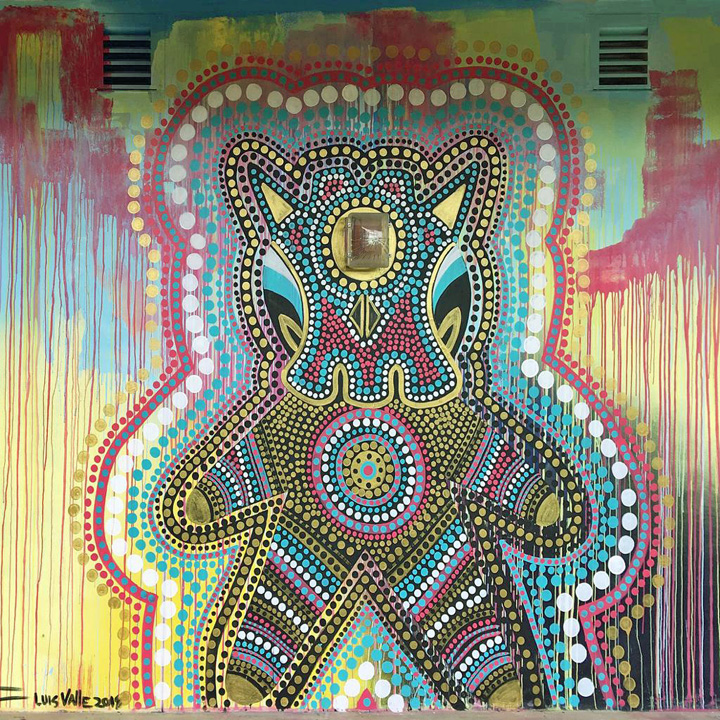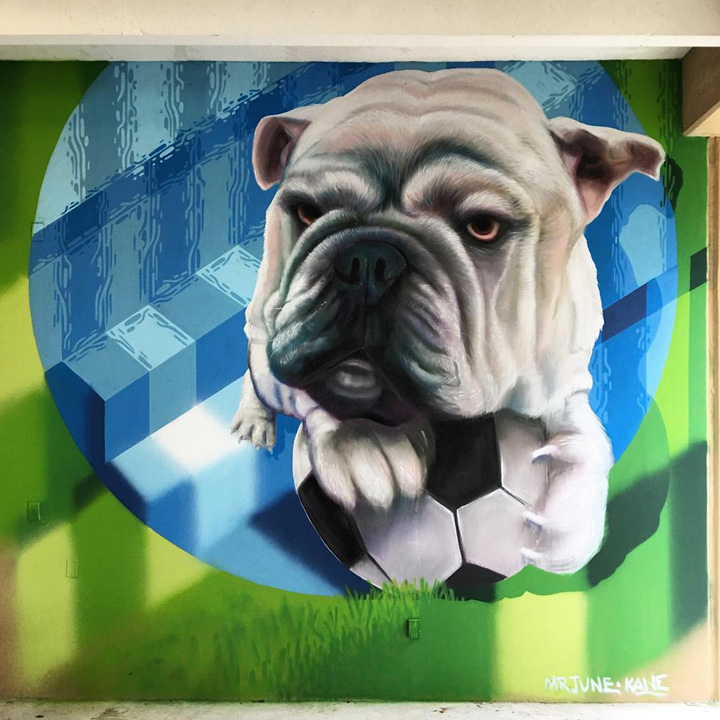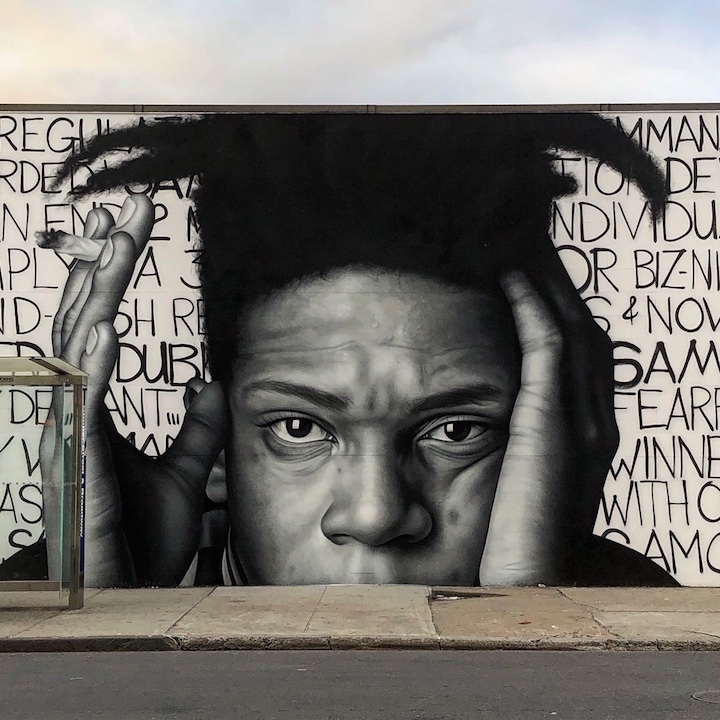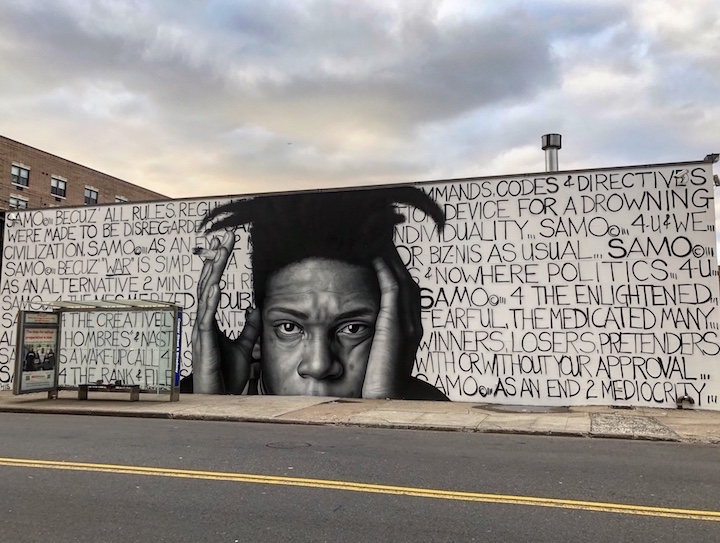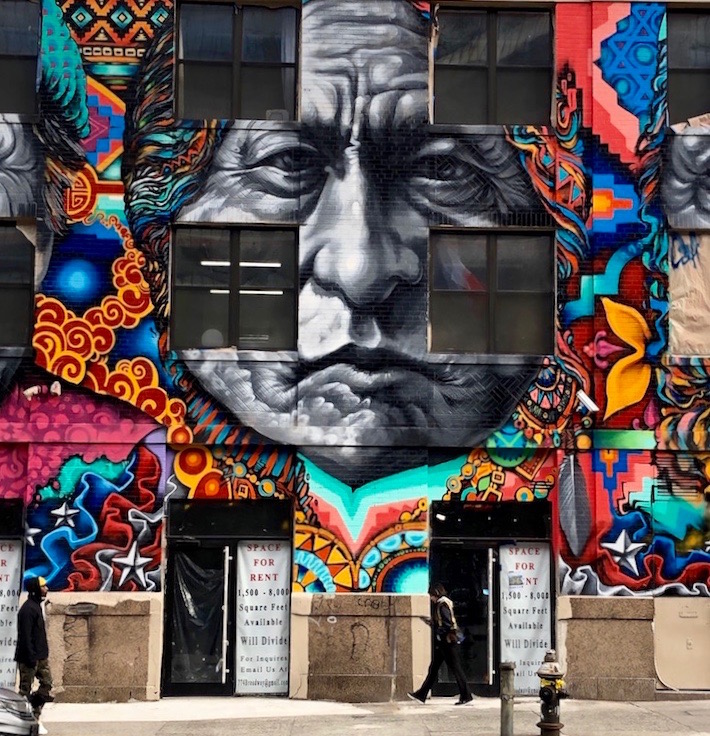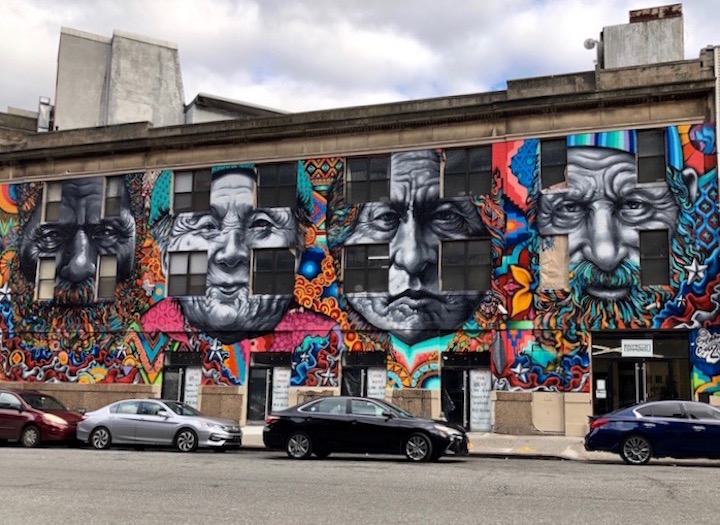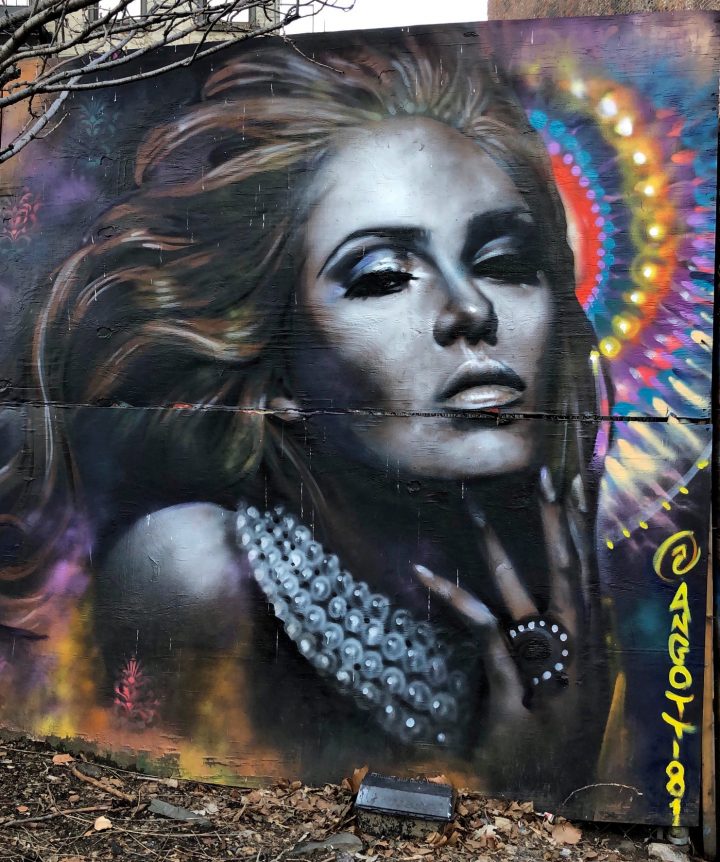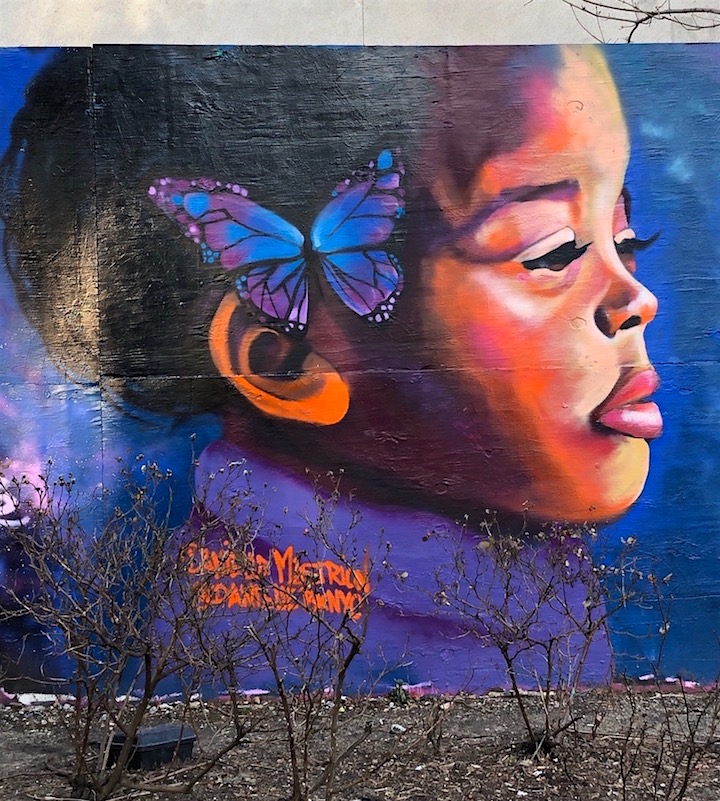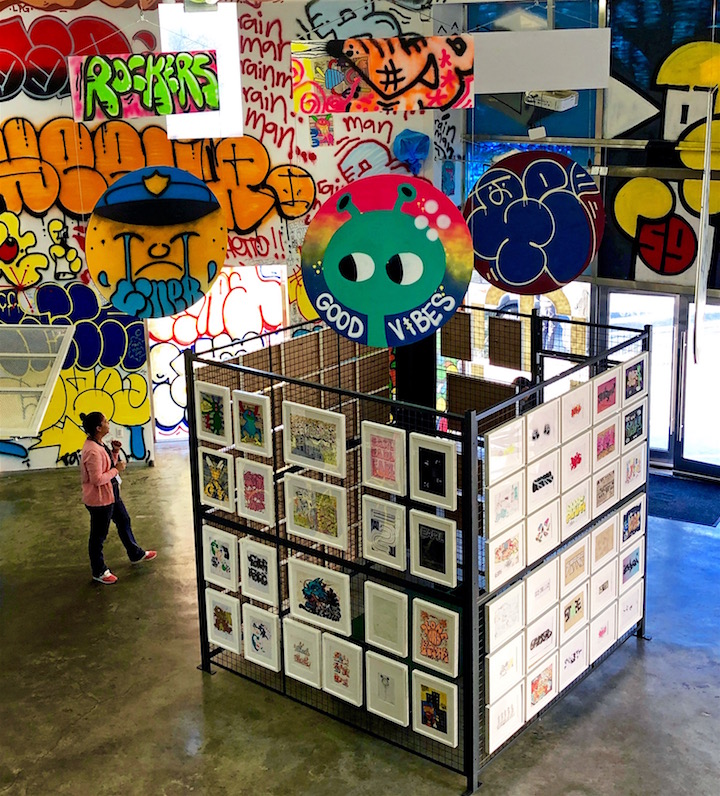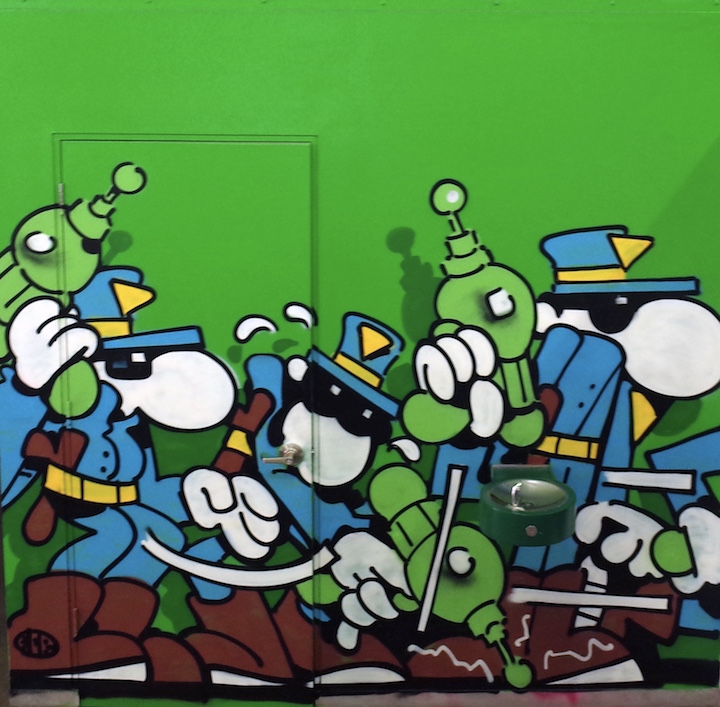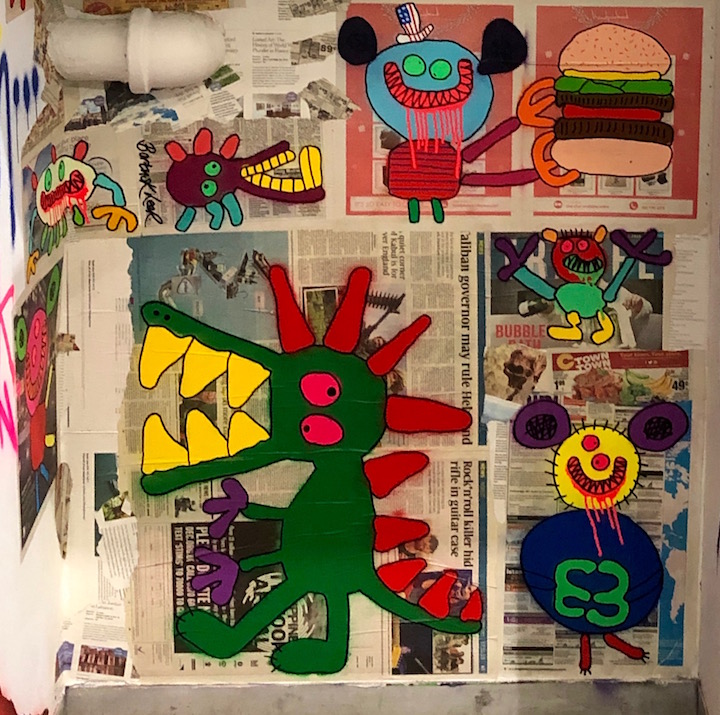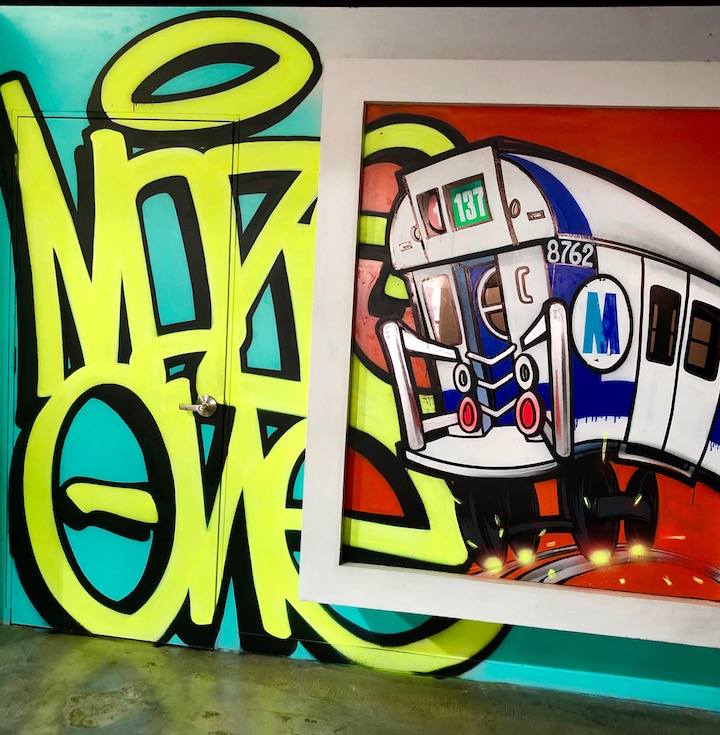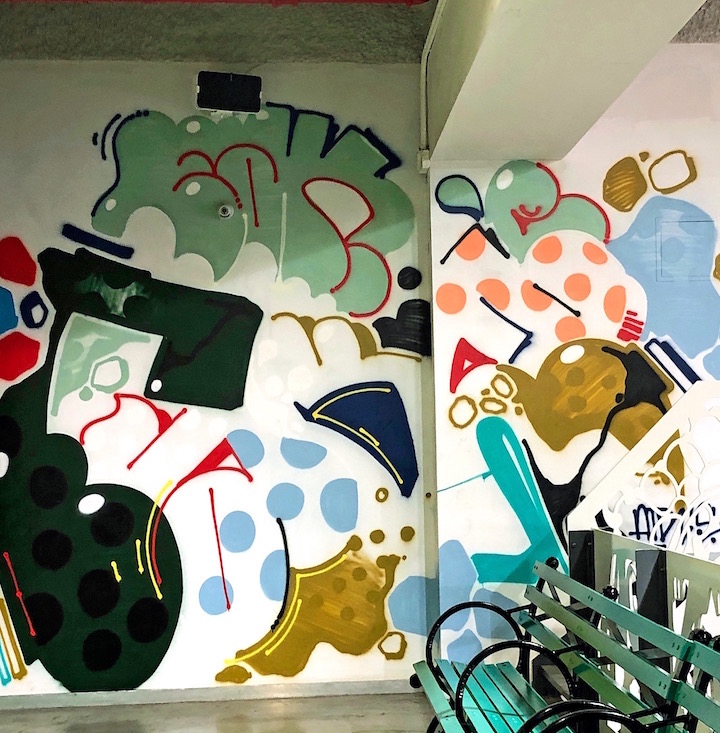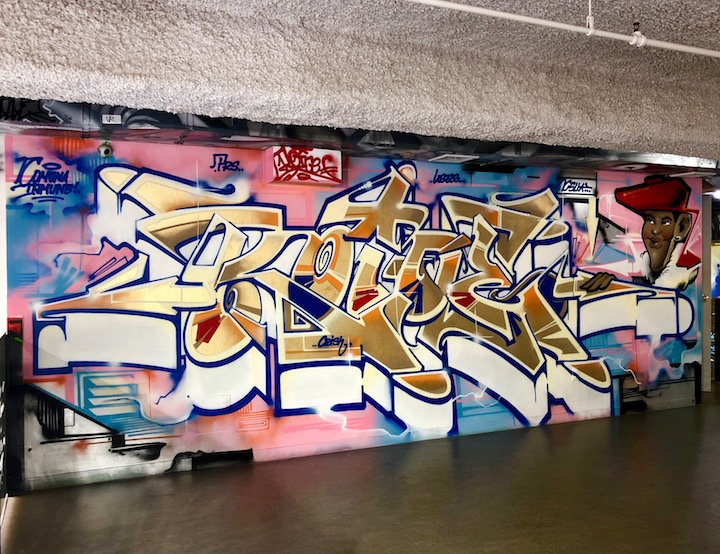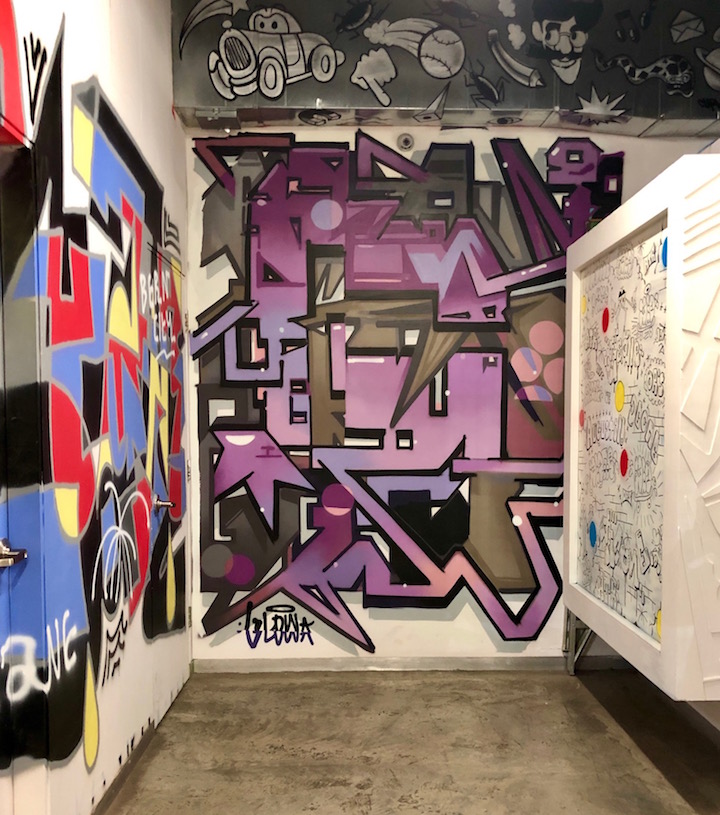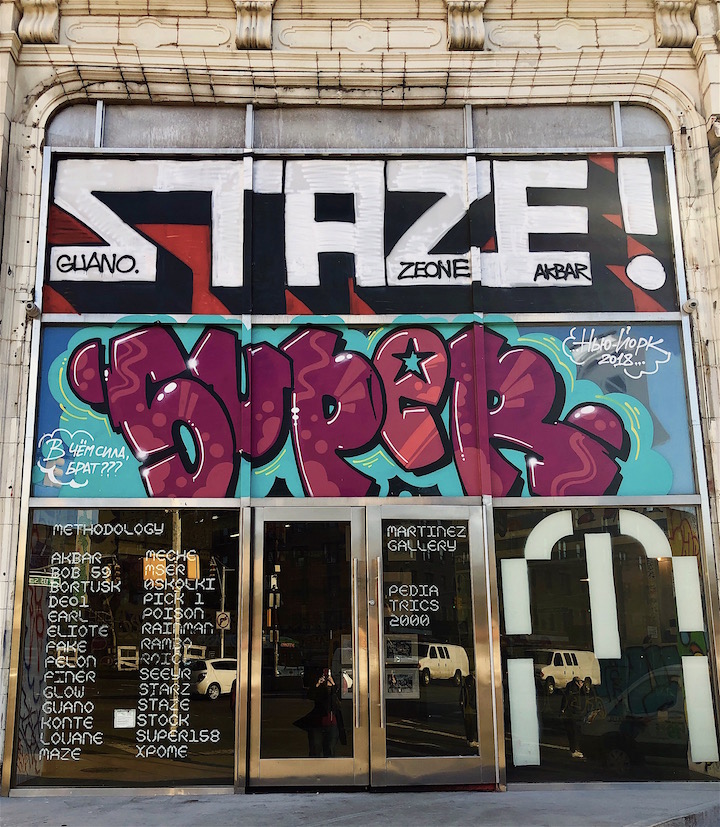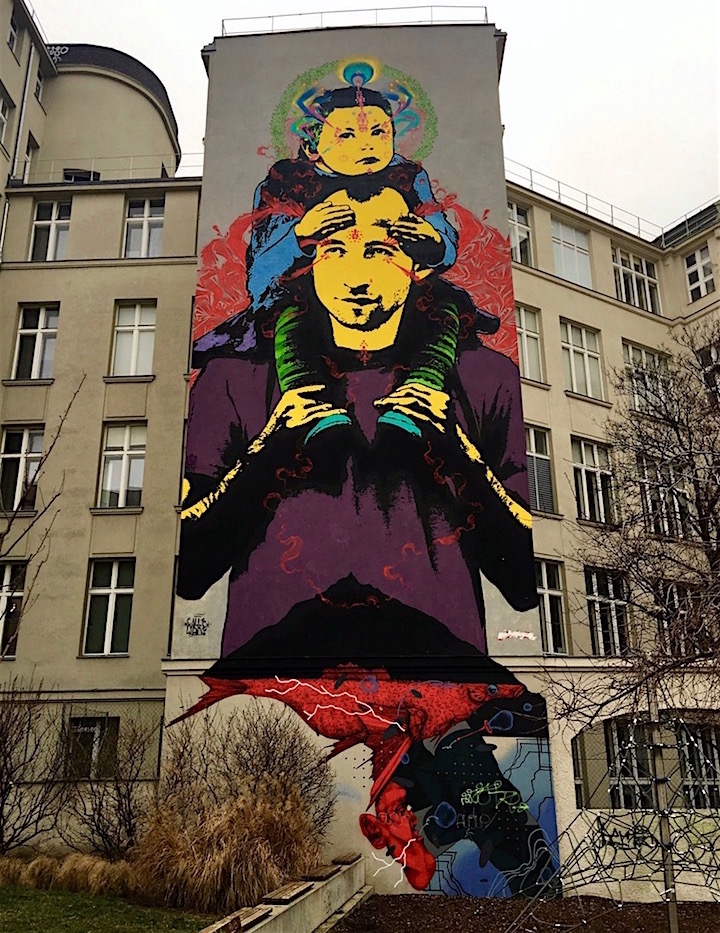
The following guest post is by Houda Lazrak
While in Vienna, I had the chance to meet and talk with Jakob Kattner, founder of Calle Libre, the impressive mural festival that has been enlivening Vienna’s 6th and 7th district walls since 2014.
How would you describe Calle Libre? And why the Spanish name?
I would describe Calle Libre as a festival of urban aesthetics. My doctoral thesis focused on urban art in South America. I researched it there for 14 months, and this festival is my way to give back to the artists who helped me — who let me live with them and document their lives.
Where in South America did you do your street art research?
Colombia was the first country I visited. Stinkfish became a friend. He introduced me to the local scene, which really paved the way for me to explore further. I then went to Brazil, where I found a unique urban art style whose history is unfamiliar to most people. And, finally, Argentina. There I could feel how the weight of dictatorial history had impacted the street art scene but, also, how artists finally found their freedom.
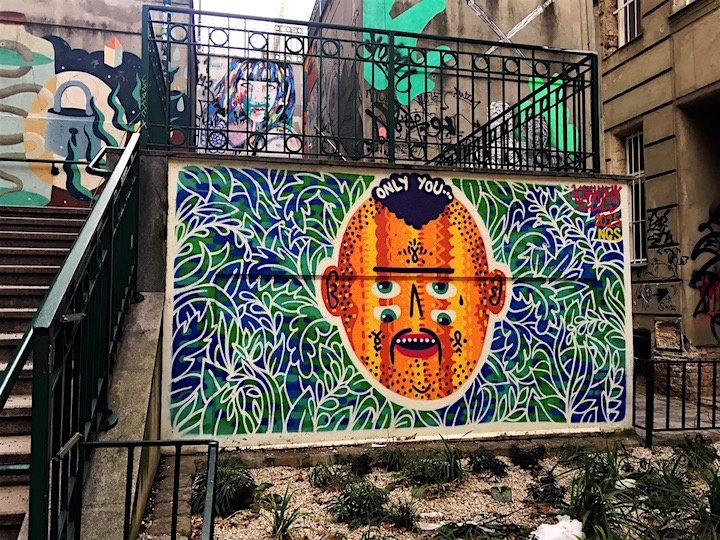
How has Calle Libre evolved since 2014?
We have broadened the programing every year. It started with live painting at the Danube Canal, along with an exhibition. We then added workshops at mumok. And the following year, we hosted film screenings, organized performances and presented artist talks. We also started doing annual signed screen print editions in collaboration with Limited Edition Art Prints aka LEAP. Among the artists we work with are Millo, Alfalfa, Inkman, Rodrigo Branco and Stinkfish. And in 2017, we launched guided tours.
What would you say is your main mission?
Intercultural exchange through art. We always include South American and local artists.
Is this your full time job?
I run a creative advertising agency called Warda Network. We produce creative, video and digital content. Actually, the agency does the documentation for Calle Libre, but the festival is its own separate nonprofit entity.
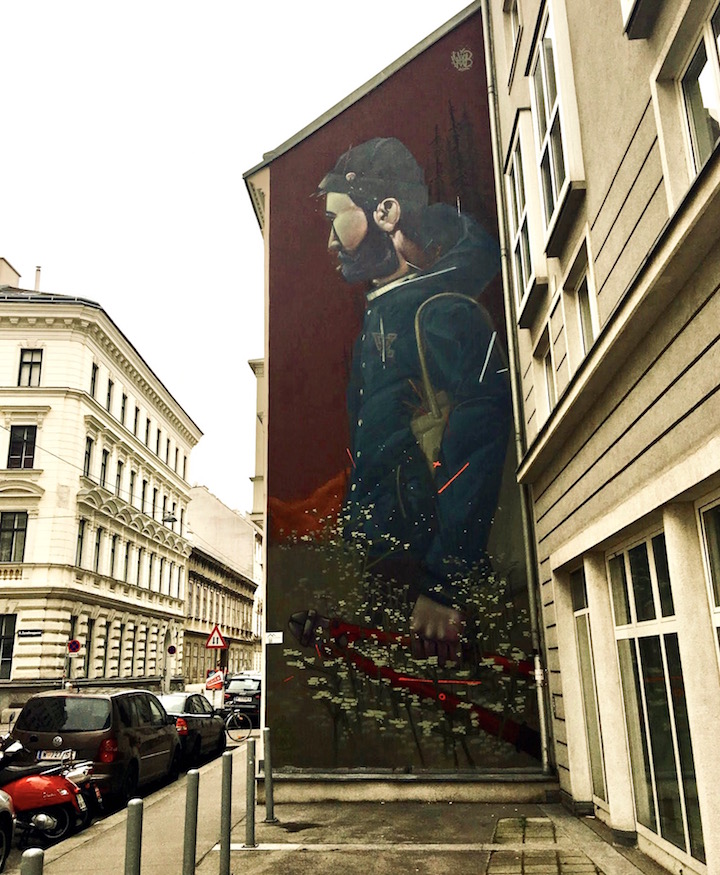
That’s why your online documentation is so great! Can you tell us something about your background?
I studied fine art and cultural theory. I am also a rapper. I’ve always wanted to work with moving images. I directed my own music video and that’s how I met my current partner at Warda Network.
Who is your team? Who helps you produce Calle Libre?
We are a team of seven. My fiancé, Laura, and I are the curators. When we started, it was just the two of us — and we still can’t believe how we managed to create an entire festival! Today, we rely on our team.
How many murals have you produced so far?
More than 35 but I am not sure how many are still up.
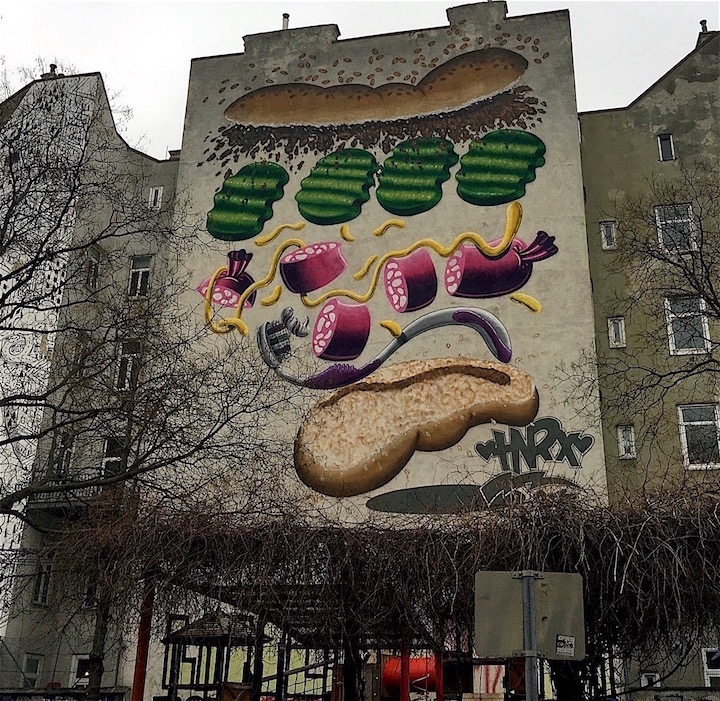
How have people reacted to Calle Libre?
It has been all positive feedback, especially from people who live near the walls that are painted during the festival. There is always a person from the team at each wall, and we have heard great things. We’ve also had funny incidents.
Such as?
When Mantra painted his 3D butterflies, someone asked us how he was able to put glass over such a big wall. And when Nychos painted a naked woman with a parrot on her shoulder in his signature Jugendstil-inspired style, a woman — whose house window faced the mural — asked why he was drawing her.
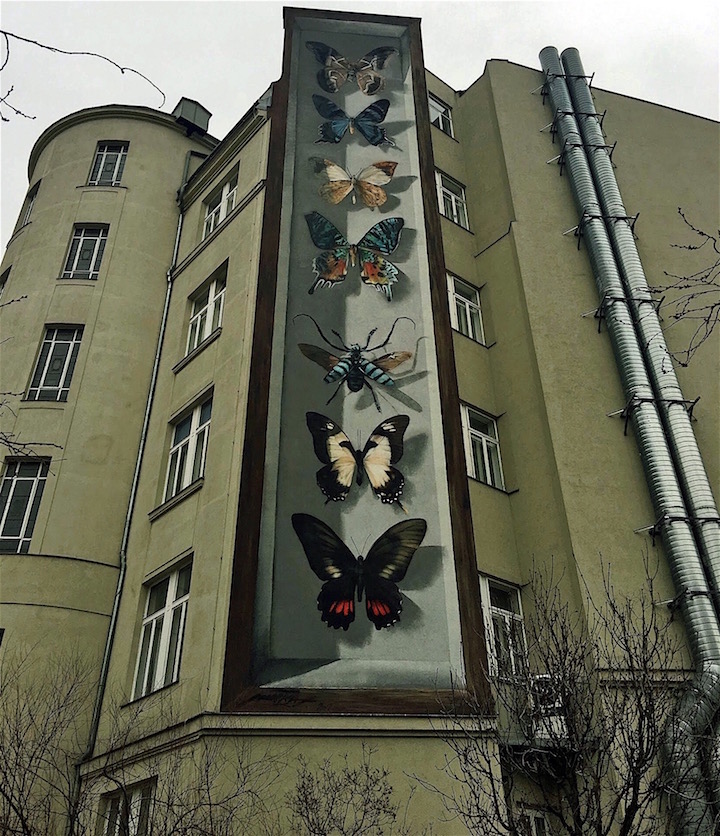
Do you focus on specific neighborhoods?
Each year we try to include new districts, but the 6th and 7th are where we have the most walls. It’s also where most of us live. These districts like the impact we’ve had, so we have good relationships with them. We try to pair artists with walls in relevant contexts. For example, the mural by Stinkfish — featuring a father carrying his child — is located on a kindergarten school property.
Have you collaborated with any museums in Vienna aside from mumok.?
The Albertina Museum contacted us about a possible collaboration on a Keith Haring exhibition. When we received the news, it was like we were knighted!
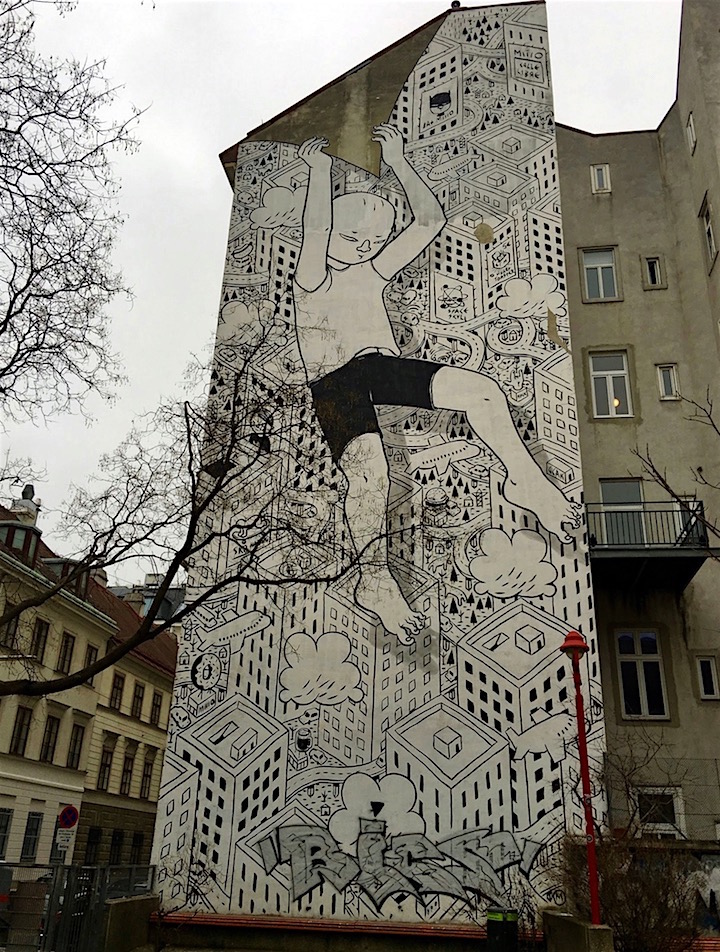
How do you get the funding to produce such a significant festival?
We get public funding from the city. We also received money from the European Union our first year. We apply for project grants, and we collaborate with local partners, based on where the walls are. It’s like playing the lottery! We never know how the next festival will be funded. We work for free and we love what we do, but it’s nice when the city and citizens give back. Every time we walk past the walls, we feel a sense of gratification.
Who are some of your favorite local artists?
Perk Up, Skirl, Frau Isa…
What has been your biggest challenge since you first launched Calle Libre?
Convincing building owners to let us paint the walls! That’s definitely the hardest part.
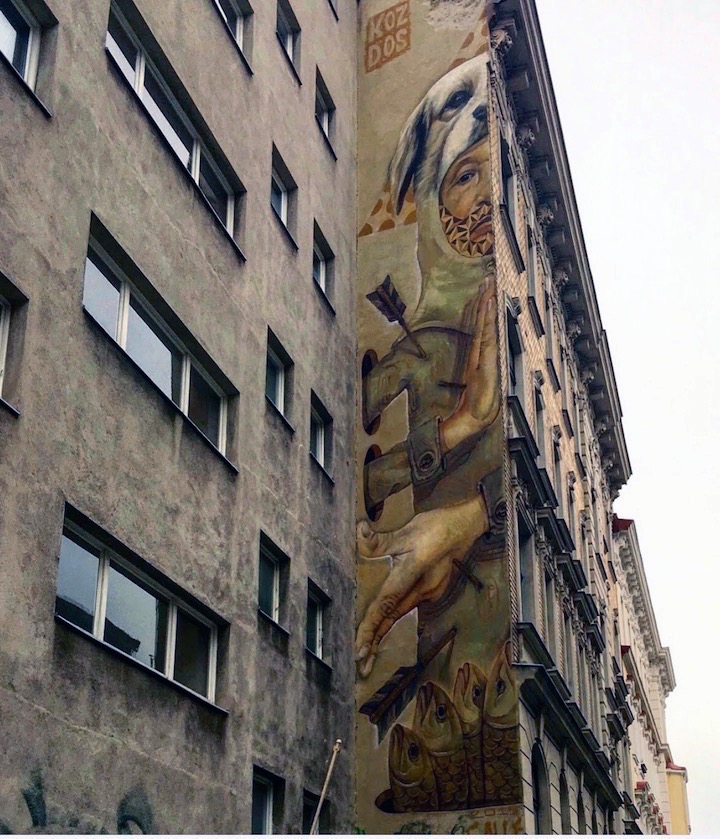
Are there any artists on your wish list?
Inti, Pixel Pancho, Herakut, Os Gemeos. I also want to bring talented artists from South America who are not yet well-known in Europe.
I’m looking forward to seeing what’s next!
Images
1 Stinkfish
2 Kashink
3 Mr Woodland
4 HNRX
5 Mantra
6 Millo
7 Koz Dos
Interview and images by Houda Lazrak
Note: Hailed in a range of media from WideWalls to the Huffington Post to the New York Times, our Street Art NYC App is now available for Android devices here.

